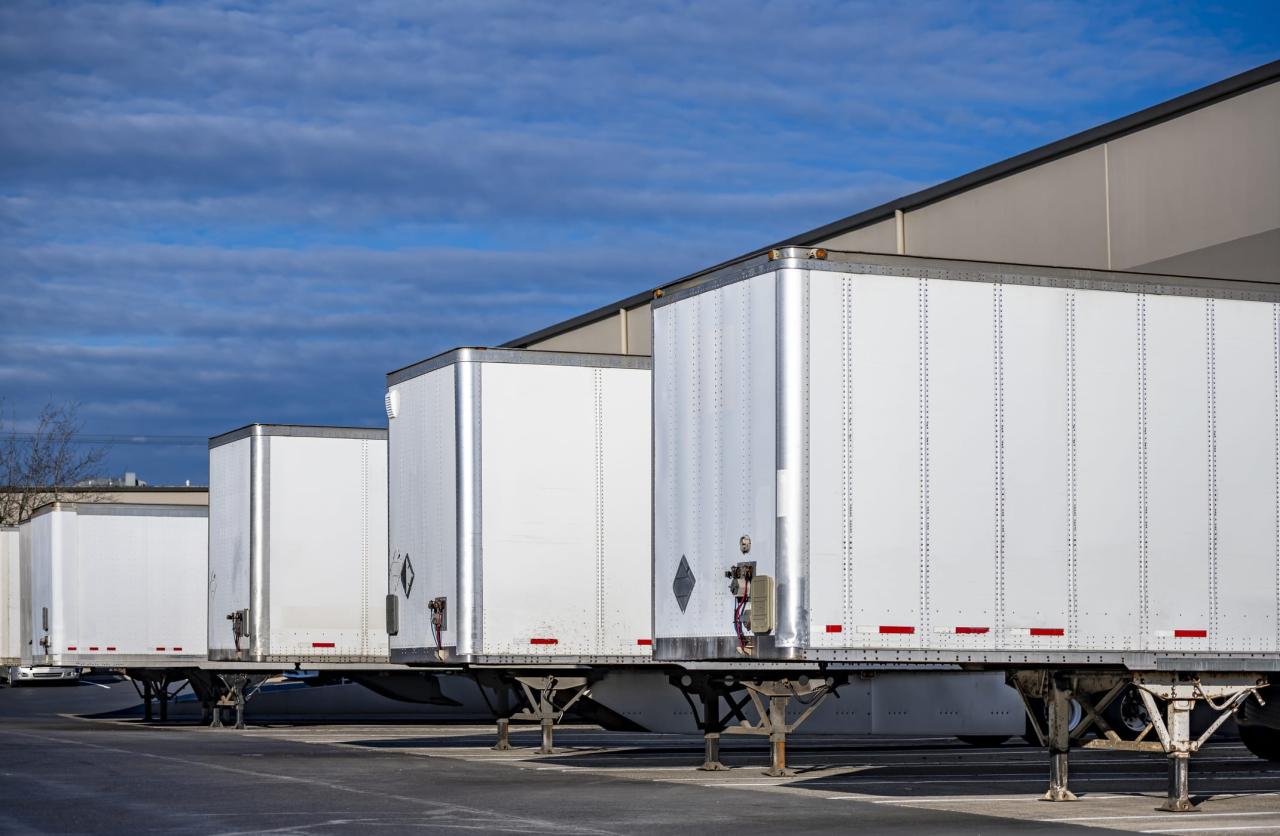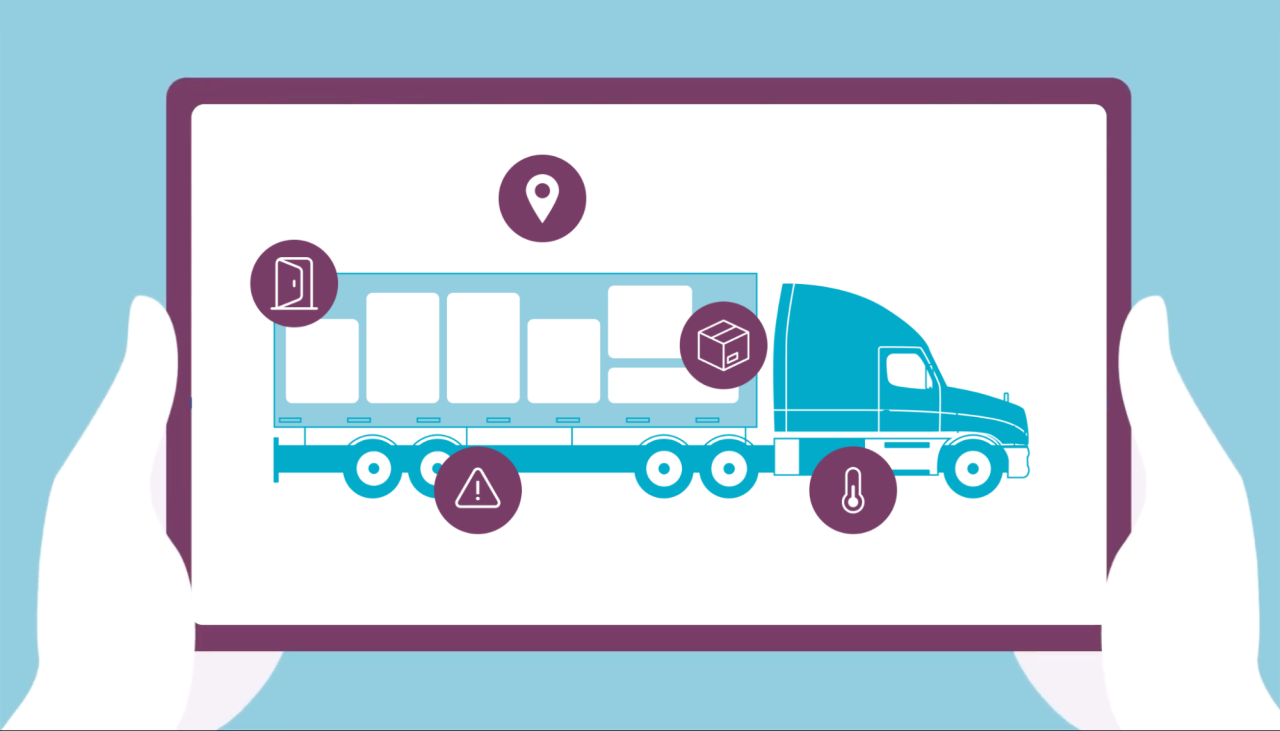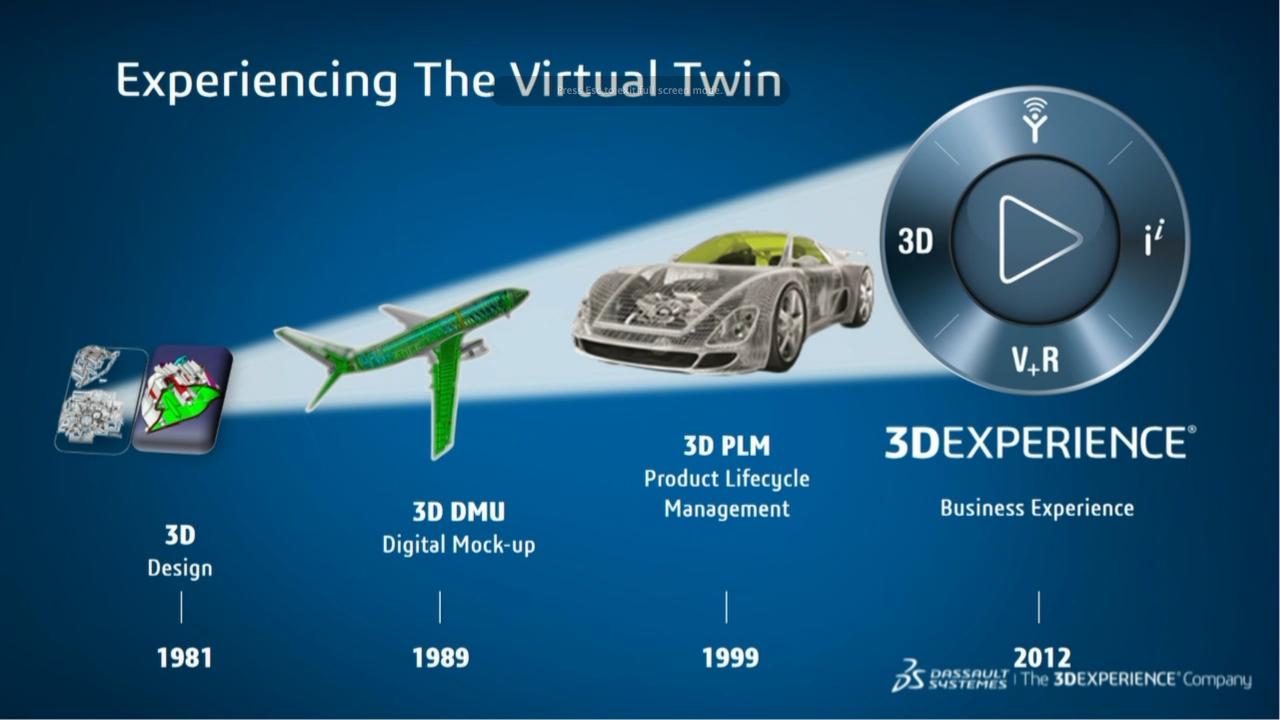Trailer Technology: A Journey of Innovation
Trailer technology has evolved significantly over the years, from simple carts to sophisticated, high-tech vehicles. This evolution has been driven by a constant need for greater efficiency, safety, and sustainability […]

Trailer technology has evolved significantly over the years, from simple carts to sophisticated, high-tech vehicles. This evolution has been driven by a constant need for greater efficiency, safety, and sustainability in the transportation industry.
The advancement of trailer technology has had a profound impact on various sectors, from transportation and logistics to construction and agriculture. Innovations like aerodynamic designs, lightweight materials, and advanced telematics have transformed the way goods are transported, leading to significant improvements in fuel efficiency, reduced emissions, and enhanced safety on the road.
Evolution of Trailer Technology
The journey of trailer technology has been a fascinating one, marked by a constant drive to improve efficiency, safety, and functionality. From humble beginnings to the sophisticated designs of today, trailers have evolved alongside the needs of the transportation industry, becoming essential components of global logistics.
Early Developments
Early trailers were simple, often consisting of wooden platforms pulled by horses or oxen. The invention of the automobile in the late 19th century paved the way for the development of motorized trailers. These early trailers were primarily used for hauling agricultural goods and other basic materials.
Key Advancements, Trailer technology
Over the years, several key advancements have revolutionized trailer technology:
1. Suspension Systems
The introduction of suspension systems significantly improved ride quality and reduced wear and tear on both the trailer and the cargo. Early trailers relied on rigid axles, which provided a bumpy and uncomfortable ride. Suspension systems, such as leaf springs and air suspension, allowed for a smoother ride, protecting cargo and reducing stress on the towing vehicle.
2. Braking Systems
Early trailers often relied on rudimentary braking systems, such as simple drum brakes. The development of hydraulic brakes, followed by air brakes, greatly enhanced braking performance, ensuring safer and more controlled stopping. These advancements were crucial for handling heavy loads and ensuring road safety.
3. Materials and Construction
The use of stronger and more durable materials, such as steel and aluminum, significantly increased trailer strength and longevity. These materials allowed for larger and heavier loads, further enhancing the efficiency of transportation.
4. Aerodynamics
Modern trailers are designed with aerodynamics in mind, reducing drag and improving fuel efficiency. This is achieved through streamlined designs, side skirts, and other features that minimize air resistance.
Types of Trailers
The evolution of trailer technology has led to the development of a wide range of specialized trailers, each designed for specific purposes:
1. Flatbed Trailers
Flatbed trailers are versatile and widely used for transporting a variety of goods, including construction materials, machinery, and large items. They feature a flat platform with sides that can be raised or lowered for loading and unloading.
2. Box Trailers
Box trailers, also known as van trailers, provide enclosed cargo space, offering protection from the elements and theft. They are commonly used for transporting goods that require protection, such as food, furniture, and electronics.
3. Refrigerated Trailers
Refrigerated trailers, or reefer trailers, are equipped with refrigeration units to maintain specific temperature ranges for perishable goods, such as food and pharmaceuticals. They are essential for long-distance transportation and ensuring the quality of temperature-sensitive cargo.
4. Specialized Trailers
Specialized trailers are designed for specific types of cargo, such as:
- Tank trailers: Used for transporting liquids, such as fuel, chemicals, and water.
- Lowboy trailers: Used for transporting heavy equipment, such as construction machinery and military vehicles.
- Dump trailers: Used for transporting and dumping bulk materials, such as gravel, sand, and dirt.
Trailer Technology for Specific Industries

Trailers are essential for transporting goods and materials across various industries. Their design and features are tailored to meet the specific requirements of each sector, ensuring efficient and safe transport.
Transportation and Logistics
The transportation and logistics industry relies heavily on trailers to move goods efficiently and safely. This sector uses a wide range of trailers, each designed for specific cargo types and transportation needs.
- Dry Van Trailers: These are enclosed trailers used for transporting general cargo, such as packaged goods, furniture, and electronics. They offer protection from the elements and provide secure transport.
- Refrigerated Trailers: Also known as “reefers,” these trailers are equipped with refrigeration units to maintain a controlled temperature for transporting perishable goods like food and pharmaceuticals.
- Flatbed Trailers: These trailers have an open deck, making them ideal for transporting oversized or heavy cargo, such as construction materials, machinery, and vehicles.
- Tank Trailers: These specialized trailers are designed to transport liquids or gases in bulk, such as gasoline, chemicals, and liquefied natural gas.
Construction and Heavy Equipment
The construction industry requires specialized trailers for transporting heavy equipment, building materials, and construction debris.
- Lowboy Trailers: These trailers have a low deck and adjustable ramps, allowing for the safe transport of heavy equipment, such as excavators, bulldozers, and cranes.
- Dump Trailers: These trailers have a hinged body that can be raised to dump materials, such as sand, gravel, and dirt. They are commonly used in construction and mining operations.
- Gooseneck Trailers: These trailers have a long, tapered neck that connects to the towing vehicle, providing a low center of gravity and stability for transporting heavy loads.
Agriculture and Farming
The agricultural industry uses trailers for transporting crops, livestock, and farm equipment.
- Grain Trailers: These trailers are designed to transport bulk grain, such as wheat, corn, and soybeans. They have a large capacity and features for efficient loading and unloading.
- Livestock Trailers: These trailers are specifically designed to transport animals, such as cattle, pigs, and sheep. They have features for ventilation, safety, and animal comfort.
- Farm Equipment Trailers: These trailers are used to transport farm equipment, such as tractors, combines, and planters. They often have a flatbed design and are equipped with features for secure transport.
Retail and Consumer Goods
The retail industry uses trailers for transporting goods from manufacturers to retail stores and distribution centers.
- Box Trailers: These trailers are similar to dry van trailers and are used for transporting a wide range of consumer goods, such as clothing, electronics, and household items.
- Curtain-Side Trailers: These trailers have a curtain system that can be opened and closed, allowing for easy access to the cargo. They are often used for transporting goods that require quick loading and unloading.
- Vans: These are smaller trailers, often used for transporting goods within urban areas or for deliveries to individual customers.
Trailer Technology and Sustainability
The transportation industry significantly contributes to greenhouse gas emissions and environmental degradation. However, advancements in trailer technology are playing a crucial role in reducing the environmental impact of trucking operations. These innovations focus on improving fuel efficiency, minimizing aerodynamic drag, utilizing lightweight materials, and incorporating emissions reduction technologies.
Fuel Efficiency Improvements
Fuel efficiency is a critical factor in reducing the environmental impact of trucking operations. Trailer technology has significantly improved fuel efficiency through various advancements.
- Aerodynamic Designs: Streamlined trailer designs reduce drag, leading to improved fuel economy. Features like rounded corners, tapered noses, and side skirts minimize air resistance, resulting in lower fuel consumption. For example, a study by the American Trucking Associations (ATA) found that aerodynamic improvements could reduce fuel consumption by up to 10%.
- Tire Technology: Low rolling resistance tires are designed to minimize friction between the tire and the road surface, reducing fuel consumption. Advancements in tire compounds and tread patterns contribute to improved fuel efficiency.
- Trailer Weight Optimization: Lightweight materials, such as aluminum and composite materials, are increasingly used in trailer construction, reducing overall weight and improving fuel economy. For instance, a trailer made with aluminum can weigh up to 1,000 pounds less than a traditional steel trailer, resulting in significant fuel savings.
Aerodynamic Designs
Aerodynamic designs play a significant role in reducing fuel consumption and emissions. Trailer manufacturers are incorporating various aerodynamic features to minimize air resistance and improve fuel efficiency.
- Trailer Skirts: Trailer skirts are panels that extend from the bottom of the trailer to the ground, reducing air turbulence and improving fuel efficiency. They create a smoother airflow around the trailer, minimizing drag and reducing fuel consumption.
- Rear Fairings: Rear fairings are devices mounted on the back of the trailer to reduce air resistance and improve fuel efficiency. They create a smooth airflow around the trailer, minimizing turbulence and reducing drag.
- Underride Guards: Underride guards are safety devices designed to prevent vehicles from sliding under a trailer in the event of a rear-end collision. However, they can also contribute to aerodynamic drag. Manufacturers are now developing underride guards with aerodynamic designs to minimize their impact on fuel efficiency.
Lightweight Materials
The use of lightweight materials in trailer construction is a crucial aspect of reducing fuel consumption and emissions. Lighter trailers require less energy to move, resulting in improved fuel efficiency.
- Aluminum: Aluminum is a lightweight and durable material commonly used in trailer construction. It is significantly lighter than steel, resulting in reduced weight and improved fuel efficiency.
- Composite Materials: Composite materials, such as fiberglass and carbon fiber, are increasingly used in trailer construction due to their lightweight and high strength properties. They offer excellent weight reduction and improved fuel efficiency.
Emissions Reduction Technologies
Trailer technology is also playing a role in reducing emissions from trucking operations. Various technologies are being implemented to minimize emissions and promote environmental sustainability.
- Engine Technology: Advancements in engine technology, such as the use of turbochargers and variable valve timing, have resulted in improved fuel efficiency and reduced emissions.
- Aftertreatment Systems: Aftertreatment systems, such as diesel particulate filters (DPFs) and selective catalytic reduction (SCR) systems, are designed to remove pollutants from exhaust gases, reducing emissions.
- Alternative Fuels: The use of alternative fuels, such as biodiesel and natural gas, can significantly reduce emissions from trucking operations. Biodiesel is a renewable fuel made from vegetable oils or animal fats, while natural gas is a cleaner-burning fossil fuel.
Future Trends in Trailer Technology
The trailer industry is rapidly evolving, driven by advancements in technology, changing consumer demands, and a growing focus on sustainability. This evolution is leading to the development of innovative trailer designs and technologies that are transforming the way goods are transported.
Autonomous Trailer Systems
Autonomous trailer systems are poised to revolutionize the transportation industry by enhancing efficiency and safety. These systems utilize advanced sensors, artificial intelligence (AI), and GPS technology to navigate and operate trailers without human intervention.
Autonomous trailers can:
- Improve safety by reducing human error and fatigue.
- Increase efficiency by optimizing routes and minimizing downtime.
- Reduce costs by minimizing fuel consumption and wear and tear on vehicles.
For example, companies like Peloton Technology and Embark Trucks are developing autonomous trailer systems that can operate in platooning formations, where multiple trailers follow a lead truck, reducing drag and fuel consumption.
Advanced Telematics and Data Analytics
Advanced telematics systems are transforming the way trailers are managed and monitored. These systems use sensors and data analytics to provide real-time insights into trailer performance, location, and cargo status.
This data can be used to:
- Optimize routes and reduce delivery times.
- Monitor cargo conditions and ensure product quality.
- Improve fleet management by identifying maintenance needs and optimizing trailer utilization.
Companies like Trimble and Fleetmatics offer telematics solutions that provide data on trailer location, temperature, and fuel consumption, enabling fleet managers to make informed decisions about route planning, maintenance, and fuel efficiency.
Smart Trailer Designs
Smart trailer designs incorporate advanced technologies to enhance functionality, safety, and efficiency. These designs include features such as:
- Self-adjusting suspension systems that optimize ride comfort and cargo stability.
- Integrated sensors that monitor tire pressure, cargo weight, and temperature.
- Automated loading and unloading systems that streamline operations and reduce labor costs.
For example, the “Smart Trailer” by Wabash National features a self-adjusting suspension system, a remote trailer monitoring system, and a cargo management system that provides real-time data on cargo condition and location.
Integration with Connected Vehicles
The integration of trailers with connected vehicles is creating a more seamless and efficient transportation ecosystem. Connected trailers can communicate with trucks and other vehicles, sharing information about location, cargo status, and potential hazards.
This integration enables:
- Improved safety through real-time hazard alerts and communication between vehicles.
- Enhanced efficiency by optimizing routes and minimizing downtime.
- Streamlined logistics by providing real-time data on cargo status and location.
For instance, the “TrailerConnect” system by Qualcomm connects trailers to trucks, providing real-time data on trailer location, cargo temperature, and other critical information, enabling fleet managers to make informed decisions about route planning, maintenance, and fuel efficiency.
Safety Features in Trailer Technology

Modern trailers are equipped with a range of safety features designed to enhance driver and road user safety, reducing the risk of accidents and minimizing the impact of potential incidents. These features go beyond basic safety requirements, incorporating advanced technologies to improve braking, stability, visibility, and load security.
Braking Systems
Modern trailers are equipped with advanced braking systems that ensure efficient and reliable stopping.
- Electronic Braking Systems (EBS): EBS utilizes electronic signals to control the trailer brakes, providing faster and more precise braking response compared to traditional hydraulic systems. This system also incorporates features like anti-lock braking (ABS), which prevents wheel lock-up during hard braking, maintaining vehicle control and preventing skidding.
- Electrically Controlled Air Brakes (ECAS): ECAS offers greater control over trailer braking by using electric signals to regulate air pressure within the brake lines. This allows for more precise braking adjustments and enhances stability during braking.
- Trailer Stability Control (TSC): TSC systems work in conjunction with the trailer’s braking system to maintain stability during critical situations like sudden lane changes or slippery road conditions. Sensors monitor the trailer’s movements, and if instability is detected, the system automatically applies brakes to individual wheels, correcting the trailer’s trajectory and preventing rollovers.
Stability Control Systems
Trailer stability control systems play a crucial role in preventing accidents by enhancing the trailer’s stability, especially during challenging road conditions or sudden maneuvers.
- Electronic Stability Control (ESC): ESC systems monitor the trailer’s movements and apply brakes to individual wheels to maintain stability during critical situations like sudden lane changes or slippery road conditions. This system helps prevent rollovers and improves overall trailer handling.
- Trailer Sway Control (TSC): TSC systems are designed to counteract trailer sway, a dangerous phenomenon that can occur at higher speeds or when encountering crosswinds. Sensors monitor the trailer’s movements, and if sway is detected, the system automatically applies brakes to the trailer wheels, reducing the sway and restoring stability.
Lighting and Visibility Enhancements
Proper lighting is essential for safe driving, especially in low-light conditions. Modern trailers feature advanced lighting systems to improve visibility and ensure safe operation.
- LED Lighting: LED lights offer numerous advantages over traditional incandescent bulbs, including increased brightness, longer lifespan, and lower energy consumption. They provide brighter and more efficient illumination, improving visibility for other road users.
- Rear Underride Guards: Rear underride guards are safety features designed to prevent vehicles from sliding under the trailer in the event of a rear-end collision. These guards help reduce the risk of serious injuries and fatalities.
Load Securement Systems
Proper load securement is crucial for preventing cargo from shifting during transit, which could lead to accidents or injuries. Modern trailers feature advanced load securement systems to ensure safe and stable cargo transport.
- Cargo Restraint Systems: These systems use a combination of straps, chains, and other devices to secure the cargo to the trailer bed, preventing it from shifting or falling during transit. Advanced cargo restraint systems often incorporate tensioning devices and indicators to ensure proper load security.
- Load Monitoring Systems: Load monitoring systems utilize sensors to track the weight distribution and stability of the cargo within the trailer. These systems can alert the driver to potential issues with load balance, preventing accidents caused by shifting cargo.
Closing Notes
The future of trailer technology promises even greater advancements, with the development of autonomous systems, smart designs, and seamless integration with connected vehicles. These innovations have the potential to revolutionize the transportation industry, further improving efficiency, safety, and sustainability.
Trailer technology is constantly evolving, with new innovations emerging to improve efficiency and safety. One company leading the way in this field is four slide technology inc , known for their cutting-edge designs and commitment to excellence. Their expertise in trailer technology is evident in their wide range of products, which are designed to meet the specific needs of various industries.




